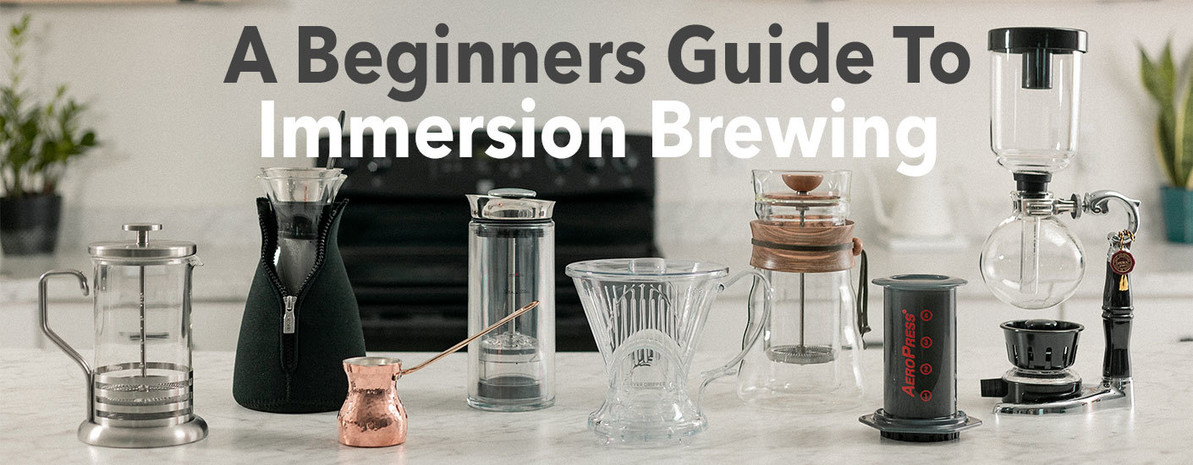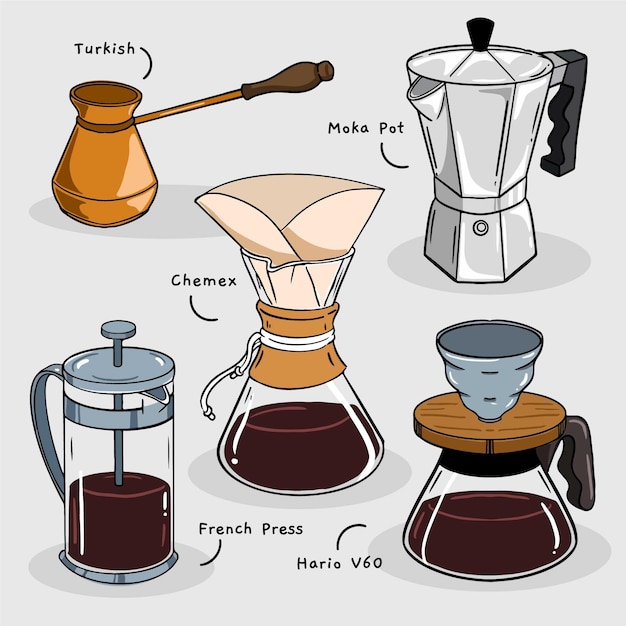Coffee Brewing Methods Demystified: From French Press to Cold Mixture
Wiki Article
The Scientific Research Behind Coffee Developing: Exactly How Temperature and Time Affect Your Beverage
Recognizing the science behind coffee developing exposes that temperature and time are not plain variables however pivotal aspects that dictate the drink's flavor account and overall top quality. As we explore the subtleties of these elements, the inquiry occurs: just how can one properly balance temperature and time to attain that best brew?The Chemistry of Coffee Removal
The chemistry of coffee removal digs right into the complex procedures that transform raw coffee beans right into the aromatic beverage enjoyed worldwide. This improvement mainly entails the solubility of various substances existing in the beans, which are influenced by aspects such as grind size, water top quality, and the brewing technique used.During the brewing procedure, warm water serves as a solvent, removing soluble compounds, including high levels of caffeine, acids, sugars, and lipids, from the coffee premises. Each compound adds to the taste account, aroma, and body of the final beverage. As an example, acids are accountable for bright and tasty notes, while oils contribute to a rich mouthfeel.
The removal procedure is not consistent; various substances liquify at different rates. The initial stages of brewing essence acids and sugars, causing a pleasurable acidity, while extended removal can cause anger as a result of over-extraction of unwanted substances. Recognizing these chemical communications is crucial for optimizing brewing techniques, as the balance in between removal time and water temperature level can dramatically affect the total high quality of the coffee. Eventually, grasping the chemistry of coffee extraction is essential to achieving a all-around and delicious mug.
Suitable Brewing Temperatures
Locating the ideal brewing temperature level is necessary for unlocking the complete capacity of coffee flavors and fragrances - coffee brewing methods. Research study suggests that the optimum variety for brewing coffee exists between 195 ° F to 205 ° F(90 ° C to 96 ° C) Within this array, the extraction procedure successfully dissolves the preferable soluble compounds in coffee beans, bring about a flavorful and well balanced cupDeveloping at lower temperature levels, such as below 195 ° F(90 ° C ), might result in under-extraction, producing a weak and acidic mixture with muted flavors. Conversely, brewing at temperature levels surpassing 205 ° F(96 ° C) can bring about over-extraction, creating a bitter and harsh preference because of the too much dissolution of undesirable substances, such as tannins.
Moreover, the optimal developing temperature can differ relying on the coffee bean type and roast degree. Lighter roasts typically profit from somewhat higher temperatures to boost their complicated taste profiles, while darker roasts may be better fit to reduced temperature levels to reduce resentment.
Inevitably, keeping accuracy in developing temperature levels is critical for achieving a harmonious equilibrium of tastes, making certain that every mug of coffee supplies a satisfying sensory experience.
Impact of Developing Time
Developing time plays a crucial duty in establishing the taste account and general high quality of coffee. The extraction process, which affects the preference, scent, and body of the beverage, is mostly based on how long the coffee premises touch with water. Much shorter developing times can lead to under-extraction, causing a sour or weak flavor, as insufficient soluble substances are liquified. On the other hand, prolonged developing can cause over-extraction, where unfavorable compounds are launched, leading to a bitter or astringent taste.Optimal developing time varies relying on the technique used and the work size of the coffee. A French press typically calls for about 4 minutes, while coffee extraction is normally completed within 25 to 30 secs. It is necessary to adjust brewing time in combination with other variables, such as water temperature level and coffee-to-water proportion, to accomplish the preferred taste profile.
Understanding the effect of developing time allows coffee fanatics to refine their developing techniques, eventually boosting the sensory experience of their cup (coffee brewing methods). With mindful attention to this variable, one can unlock the complete potential of the coffee, exposing its distinct features and nuances
Brewing Approaches and Their Effects

For example, techniques like French press and chilly mixture permit a much longer steeping time, causing a fuller body and durable taste as a result of raised removal of oils and soluble solids. Alternatively, coffee developing makes use of high stress and a much shorter removal time, creating a focused shot that highlights intense flavors and a rich crema.
Pour-over techniques, such as Chemex or V60, offer a more regulated removal procedure, enabling the brewer to manipulate flow price and water circulation, which can boost illumination and quality. Percolation methods cycle water with the coffee grounds several times, leading to a more powerful, typically bitter flavor.
Last but not least, using paper filters versus metal filters can additionally impact the final preference; paper filters generally produce a cleaner cup by capturing oils and great bits, while steel filters allow more oils to pass through, contributing to a fuller mouthfeel - coffee brewing methods. Understanding these subtleties can raise the coffee experience significantly
Tips for Improving Your Mixture
A well-executed mixture can transform also the easiest coffee into an amazing experience. To achieve this, attention to detail is vital. Beginning with premium, fresh baked beans, as their taste profile diminishes over time. Grind the beans right before brewing to optimize quality, making sure the work size matches your developing technique-- coarser for French press and finer for coffee.Water high quality plays an essential function; usage filteringed system water without impurities. The excellent brewing temperature level ranges in between 195 ° F and 205 ° F(90 ° C to 96 ° C ) Too hot can burn the coffee, while too great might under-extract flavors.
Timing is just as crucial. For immersion methods, steeping for 3 to five minutes is optimal, whereas drip approaches usually take about 5 mins. Try out brew times to discover your recommended toughness.

Verdict
In summary, the detailed connection in between temperature and time is extremely important in the coffee developing procedure. Following optimum developing temperatures between 195 ° F and 205 ° F, you can try these out along with specific timing tailored to each technique, ensures the desired taste profile is attained. Recognizing these scientific concepts empowers individuals my blog to fine-tune their developing techniques, eventually causing a much more enjoyable and well balanced coffee experience. Mastery of these aspects is important for any type of coffee enthusiast seeking quality in their beverage.Recognizing the scientific research behind coffee brewing exposes that temperature level and time are not simple variables but essential components that dictate the beverage's taste account and total quality. Understanding these chemical communications is critical for enhancing brewing methods, as the equilibrium in between extraction time and water temperature level can considerably affect the total top quality of the coffee.Brewing time plays an essential role in figuring out the taste profile and general top quality of coffee. By focusing on these elements-- bean top quality, grind size, water temperature level, soaking time, and proportion-- you can raise your coffee brewing process, resulting in a regularly premium mug.
In summary, the elaborate you could look here connection between temperature and time is paramount in the coffee brewing procedure.
Report this wiki page